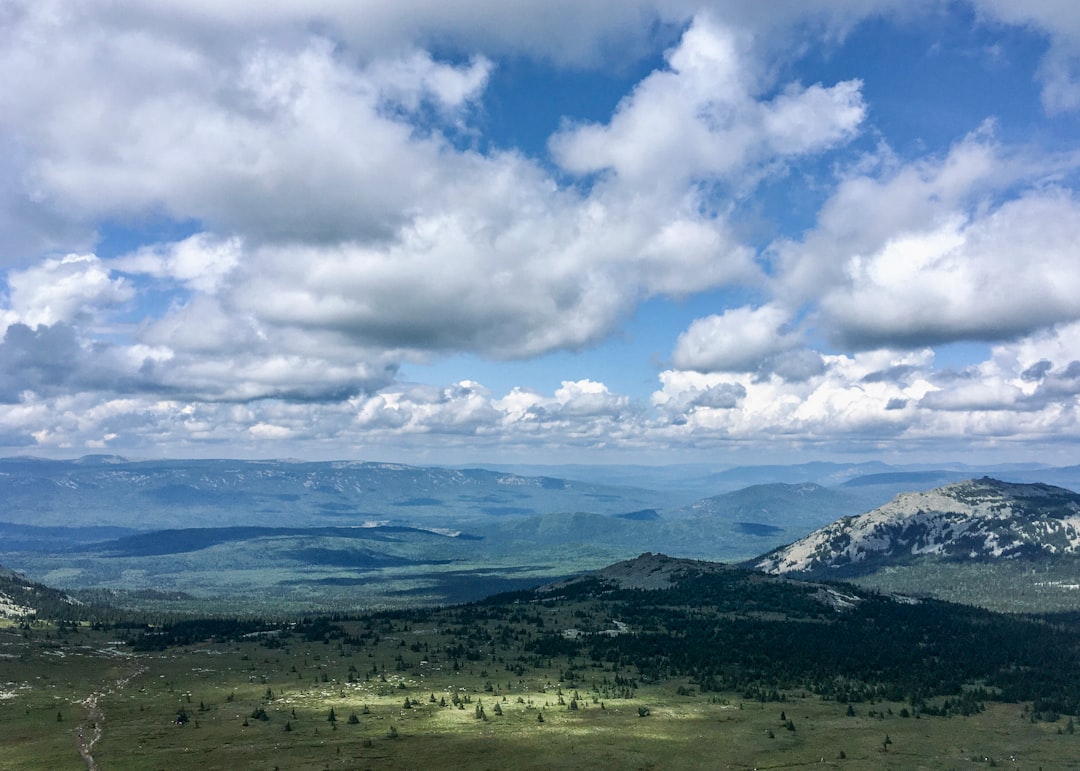The Dyatlov Pass Incident: When Nine Hikers Vanished Into the Siberian Night

Picture this: Nine experienced Russian hikers set out on a winter expedition in 1959, only to be found weeks later in the most disturbing circumstances imaginable. The Dyatlov Pass incident was an event in which nine Soviet ski hikers died in the northern Ural Mountains on 1 or 2 February 1959, under uncertain circumstances. What makes this case absolutely spine-chilling is what the rescue teams discovered. Overnight, something caused them to cut their way out of their tent and flee the campsite while inadequately dressed for the heavy snowfall and subzero temperatures. After the group’s bodies were discovered, an investigation by Soviet authorities determined that six of them had died from hypothermia while the other three had been killed by physical trauma. The tent was slashed open from the inside, suggesting the hikers were desperate to escape something terrifying. Recent scientific research provides a compelling explanation for the tragedy, blending physics, topography, and weather patterns to shed light on the infamous Dyatlov Pass incident. The hikers, all experienced outdoorspeople, pitched their tent on a slope of Kholat Saykhl, ominously nicknamed “Dead Mountain” in the local Mansi language. Even with recent avalanche theories gaining scientific support, the case remains one of history’s most haunting unsolved mysteries.
The Voynich Manuscript: An Alien Language or Medieval Hoax?

The Voynich manuscript is an illustrated codex, hand-written in an unknown script referred to as Voynichese. The vellum on which it is written has been carbon-dated to the early 15th century (1404–1438). Stylistic analysis has indicated the manuscript may have been composed in Italy during the Italian Renaissance. What’s truly creepy about this book is that despite centuries of attempts by the world’s best codebreakers, nobody can read a single word. The Voynich manuscript has been studied by both professional and amateur cryptographers, including American and British codebreakers from both World War I and World War II. Codebreakers Prescott Currier, William Friedman, Elizebeth Friedman, and John Tiltman were unsuccessful. The manuscript contains bizarre illustrations of naked women swimming in green pools and strange plants that don’t exist on Earth. A researcher studying multispectral images of the famous Voynich Manuscript has identified previously hidden columns of letters on its first page. The three columns—two bearing letters of the alphabet and one of unreadable “Voynichese” characters—appear to have been added by one of the manuscript’s early owners to decrypt its mysterious writing. Even modern AI technology struggles to crack its secrets, making it feel like something from another world entirely.
The Lost Colony of Roanoke: America’s First Unsolved Disappearance

In 1587, over 100 English colonists simply vanished from Roanoke Island, leaving behind only the cryptic word “CROATOAN” carved into a tree. The settlers of Roanoke disappeared at some point in the 1580s or early 1590 without explanation and were never seen from or heard from again. All that was left behind were carvings of “CROATOAN” and “CRO.” When Governor John White returned from England after a three-year delay, he found the settlement completely abandoned with no signs of struggle or violence. Excavations in March 2024 have uncovered shards of Algonquian pottery dating back to the 1500s, along with a ring of copper wire (made of drawn copper) likely worn by an Algonquian warrior. Archaeologists speculate that the ring was brought to North America by the English settlers and traded with the indigenous people who believed that copper had spiritual significance. Recent archaeological evidence suggests the colonists may have integrated with local Native American tribes, but the truth remains frustratingly elusive. Tiny flakes of rusted metal, called hammerscales, have provided crucial evidence about what happened to the 118 colonists who disappeared in the late 1500s. The metal fragments, barely larger than grains of rice, are byproducts of metal forging and date back to the 16th Century. The fact that an entire community could disappear without a trace makes this one of America’s most enduring nightmares.
The Mary Celeste: A Ghost Ship Sailing Empty Seas

Mary Celeste, American brigantine that was found abandoned on December 5, 1872, some 400 nautical miles (740 km) from the Azores, Portugal. The fate of the 10 people aboard remains a mystery. When the British ship Dei Gratia discovered the vessel, it was like stepping into a scene from a horror movie. Crew from that ship boarded the Mary Celeste and discovered it deserted. Although there was more than 3 feet (1 meter) of water in the hold—an amount that would not have caused panic—the vessel was seaworthy. Adding to the mystery was the fact that the cargo and personal belongings were largely undisturbed, although a longboat was missing. The crew’s breakfast was still warm, their personal belongings untouched, and there were no signs of violence or struggle. The explosion would have been enough to blow open the hatches and would have been completely terrifying for everyone on board. Such a massive explosion could have been triggered by a spark caused when two loose barrels rubbed together, or when a careless crew man, pipe in mouth, opened a hatch to ventilate the hold during the long crossing from New York to Italy. Despite modern theories about alcohol vapor explosions, the image of a perfectly preserved ship sailing the seas with nobody aboard remains deeply unsettling. Meanwhile, one of the most famous maritime mysteries in history endures: Why would an experienced captain such as Briggs, or his sailors, abandon a perfectly sound ship?
The Wow! Signal: A Message From Another World?

On August 15, 1977, astronomer Jerry Ehman detected a radio signal so unusual that he wrote “Wow!” next to the data, giving the phenomenon its name. This 72-second transmission from the direction of the constellation Sagittarius was exactly what scientists expected an extraterrestrial signal would look like. The signal was incredibly strong—about 30 times more powerful than typical background radiation from space. What makes it even more mysterious is that it has never been detected again, despite numerous attempts to relocate it. The frequency matched the hydrogen line that scientists believe aliens might use to communicate because hydrogen is the most abundant element in the universe. No known natural phenomena or human technology could have produced such a signal. Some theories suggest it could have been reflected off space debris, but the precision and characteristics don’t match any earthly explanation. The fact that it occurred only once and has never repeated makes many scientists wonder if we briefly intercepted an alien transmission. Even with decades of technological advancement, we’re no closer to understanding what created this cosmic mystery.
The Antikythera Mechanism: Ancient Computer or Time Travel Proof?

Discovered in a shipwreck off the Greek island of Antikythera in 1901, this bronze device is so technologically advanced it shouldn’t exist. Dating back to around 100 BC, the mechanism contains a complex system of gears that could predict astronomical positions and eclipses decades in advance. It’s essentially an ancient computer, but the technology to create such intricate gear systems wasn’t supposed to exist for another 1,000 years. The device could track the movements of the sun, moon, and known planets with incredible accuracy. It even accounted for the irregular orbit of the moon and could predict when Olympic Games would be held. What’s truly mind-bending is that similar mechanical complexity wasn’t seen again until astronomical clocks appeared in medieval Europe. The mechanism suggests ancient Greeks had scientific knowledge we didn’t know they possessed, or possibly had access to technology that was later lost. Recent X-ray analysis has revealed even more gears and inscriptions, making it even more sophisticated than originally thought. Some fringe theories suggest it’s evidence of time travel or ancient alien technology, though mainstream archaeology attributes it to extraordinary but human ingenuity.
The Disappearance of Amelia Earhart: Aviation’s Greatest Mystery

When aviation pioneer Amelia Earhart vanished over the Pacific Ocean on July 2, 1937, she became the subject of the most expensive air and sea search in naval history up to that time. Earhart and navigator Fred Noonan were attempting to circumnavigate the globe when they disappeared somewhere near Howland Island during the most dangerous leg of their journey. Their last radio transmission indicated they were running low on fuel and couldn’t locate their intended landing strip. Despite decades of searching, no definitive wreckage has ever been found, though numerous theories and supposed evidence have emerged. Some researchers believe they crashed on Gardner Island (now Nikumaroro) and survived for days or weeks as castaways. Others suggest they were captured by Japanese forces and died in captivity. Recent expeditions have found tantalizing clues including aircraft aluminum, personal items, and human bones that might belong to Earhart, but DNA analysis has been inconclusive. The lack of concrete evidence has spawned wild theories including secret spy missions and staged disappearances. What makes this mystery particularly haunting is that Earhart was so close to completing her historic flight when she vanished into thin air.
The Dancing Plague of 1518: When Hundreds Danced Themselves to Death

In July 1518, the city of Strasbourg experienced one of history’s most bizarre and terrifying episodes when hundreds of people literally danced themselves to death. It began when a woman named Frau Troffea started dancing in the street and couldn’t stop. Within days, dozens more joined her in this compulsive, frenzied dancing that lasted for hours and days without rest. By the peak of the outbreak, around 400 people were dancing uncontrollably, with reports of participants collapsing from exhaustion, heart attacks, and strokes. The local authorities, believing the dancing was caused by “hot blood,” actually encouraged more dancing by hiring musicians and building stages. Physicians of the time were completely baffled and could offer no medical explanation for the phenomenon. Some dancers reportedly died from pure exhaustion after dancing for days without food or rest. Modern theories include mass psychogenic illness, ergot poisoning from contaminated grain, or even religious hysteria, but none fully explain the scale and duration of the outbreak. The event was so traumatic it was recorded by multiple historical sources, ruling out the possibility of myth or exaggeration. What makes this particularly chilling is imagining the horror of being unable to stop your body from dancing even as you collapse from exhaustion.
The Taos Hum: The Mysterious Sound That Drives People Mad

Since the early 1990s, residents of Taos, New Mexico, have reported hearing a persistent, low-frequency humming sound that seems to come from nowhere and everywhere at once. Described as sounding like a distant diesel engine or electrical transformer, the Taos Hum affects only about 2% of the population, but for those who hear it, the experience can be maddening. The sound is typically heard more clearly indoors and at night, leading some sufferers to experience insomnia, dizziness, and severe psychological distress. Extensive investigations by scientists, including a study commissioned by Congress, have failed to identify the source of the sound. Sensitive audio equipment placed around the town has detected no unusual sounds, suggesting the phenomenon might be neurological rather than acoustic. Similar humming sounds have been reported in other locations worldwide, including Bristol, England, and Kokomo, Indiana, but Taos remains the most famous case. Some theories include military experiments, underground mining, or even tinnitus,

